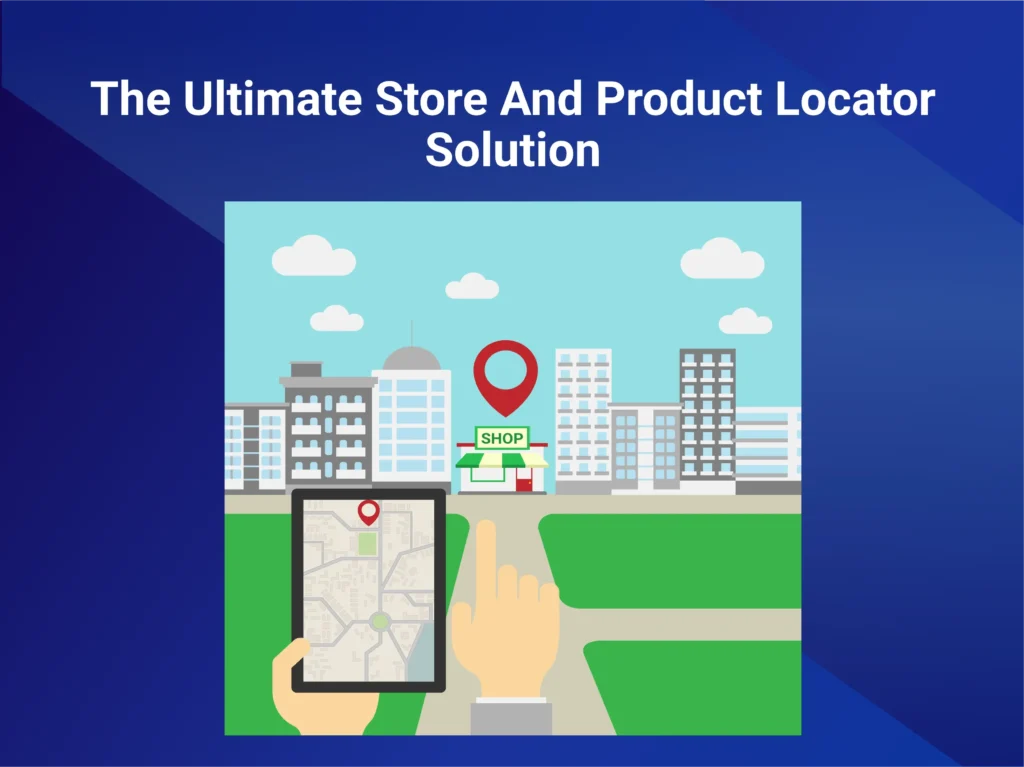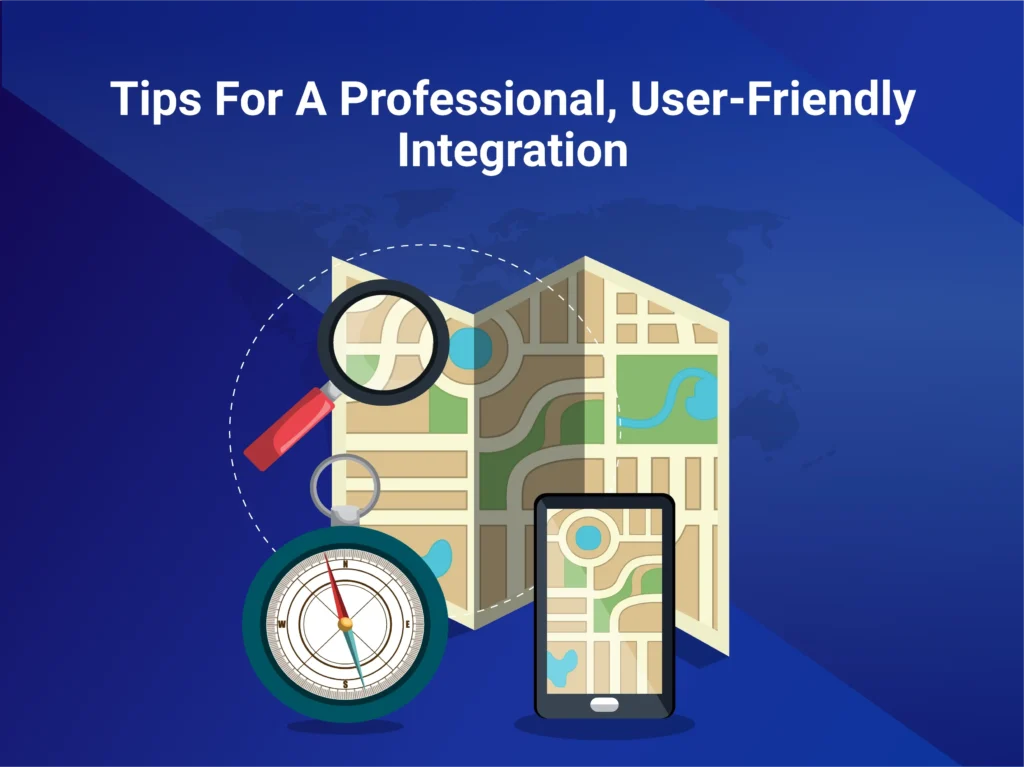
Adding a map to your website is one of the simplest ways to help visitors find your business easily. In this guide on how to add Google Maps on website, you’ll learn why it’s essential, the methods available, and which solution is best for your needs.
Most people searching for how to add Google Maps on website want clear, easy-to-follow instructions. Furthermore, they also want to know the pros and cons of each approach so they can pick what suits them best.
This introduction sets the stage by explaining why maps on websites matter and what you’ll gain by reading further.
Having a map on your site is more than just a nice touch. It builds trust, helps with local SEO, and drives customers to your physical locations.
By the end of this section, you’ll understand why investing a little time in adding a map can pay off in increased visits and sales.
Whether you’re a local shop, a service provider, or an online retailer with physical stores, you need to make it easy for customers to find you. This guide on how to add Google Maps on website will show you how.
In the next section, we’ll introduce you to a powerful solution designed specifically to make this process easy and professional.

Now that you understand why adding a map is important, let’s talk about the best way to do it.
If you’ve been wondering how to add Google Maps on website without hassle, WP Maps is the solution designed for you
Many store owners and service providers struggle with clunky, static embeds or limited plugins.
Customers expect to see accurate, interactive maps with real-time data and easy directions. They want to know exactly where your store is, what products are in stock, and how to get there quickly.
That’s why your business deserves better than a basic map iframe.
WP Maps exists because businesses need more than just a pin on a map. It was built for people who care about their customers and want to deliver the best experience possible.
When you use WP Maps, you’re not just adding a map; you’re giving your customers the confidence to visit you, shop with you, and trust you.
Imagine a visitor landing on your site and seeing a beautiful, interactive store locator that works perfectly on desktop and mobile. They can search for nearby locations, filter products, see real-time stock levels, and get directions instantly. Furthermore, it’s about removing friction and making their journey to your store as easy as possible.
WP Maps isn’t just convenient for customers; it’s a powerful tool for store owners. It’s designed to save you time, reduce errors, and help you focus on what really matters—growing your business.
With WP Maps, you can manage your entire locator in one place, sync with Google Sheets, and even automate lead capture with Zapier.
Some of the key features that make WP Maps stand out include:
These aren’t just fancy features. They solve real problems that store owners face every day.
No more worrying about outdated location info, incorrect directions, or missed opportunities to engage your customers. As a result, WP Maps empowers you to deliver the kind of seamless, professional experience people expect in 2024.
It’s also incredibly versatile.
Whether you run a small boutique, a chain of retail stores, or an e-commerce brand with distribution partners, WP Maps adapts to your needs. It’s compatible with platforms like WooCommerce, Shopify, Wix, and Magento, making integration simple and flexible.
As you explore this guide on how to add Google Maps on website, remember that WP Maps is more than a map. It’s your bridge to building stronger connections with your customers. It’s about showing them you care enough to make their experience effortless, accurate, and enjoyable.
To see everything WP Maps can do, check out the WP Maps Features page. If you’re curious about setting up your own locator, our blog post on How to Add a Google Maps Store Locator in 6 Steps is the perfect next read.
In the next section, we’ll explore why adding Google Maps to your website matters so much, and how it can transform your customer relationships and business success.

Now that you know what WP Maps can offer, let’s talk about why adding Google Maps to your website is so important.
Many people searching for how to add Google Maps on website might wonder if it’s worth the effort.
The answer is a clear yes.
Maps aren’t just a design element.
They are a critical tool for building trust, boosting local SEO, and driving real-world results. When someone lands on your site, they want clear, reliable information about where to find you. Moreover, by adding a map, you’re making their life easier and showing them you care about their experience.
Having an interactive, accurate map offers your customers confidence.
It helps answer common questions without making them dig through your site. Where are you located? How do they get there? What stores have their products? With Google Maps on your website, you provide answers at a glance.
Adding Google Maps also improves local SEO. Search engines prioritize businesses that provide accurate, detailed location data.
According to Moz, location signals are a key factor in local rankings. Including a Google Map on your contact page or store locator can signal to Google that your business is real, local, and ready to serve nearby customers.
Beyond SEO, it’s about building a seamless user experience.
Imagine someone wanting to visit your store. If your website has a map with directions, opening hours, and nearby landmarks, they’re much more likely to make the trip. This is especially important for restaurants, retail shops, service providers, and any business with a physical location.
Let’s break down the main benefits of adding Google Maps to your website:
Businesses that want to dominate local search also need to think about citation consistency and Google Business Profile optimization. For more on that, you can read Synchronize Google Business Profile with Store Locator, which explains how syncing your online details improves trust and rankings.
Maps don’t just help visitors find you. They show you care about giving them the right tools to connect with your business. By making their journey easier, you increase the chances they’ll choose you over competitors.
In a world where people rely on smartphones for everything, having Google Maps on your website isn’t optional. It’s essential. Furthermore, people expect to see your location on a map, get directions, and know you’re a real, professional operation.
This is especially true for businesses that serve multiple locations or want to capture “near me” searches. You can read about strategies for Optimizing Your Business for “Near Me” Searches to better understand how important local visibility is in today’s market.
By now, you should see that learning how to add Google Maps on website is about more than placing a pin. It’s about growing your reach, improving your credibility, and serving your customers better.
In the next section, we’ll look at the simplest, most direct way to add a Google Map to your website, even if you have zero technical skills.

Now that you know why it’s so important to add a map to your site, let’s look at the easiest method available.
For anyone wondering how to add Google Maps on website without complicated tools or plugins, embedding with HTML is the most straightforward approach.
This method is perfect for small business owners, bloggers, or anyone who wants a quick, free way to show their location. It uses Google Maps’ own sharing tools, so you don’t need to know how to code or install anything special.
It’s as easy as copying and pasting.
Here’s a simple step-by-step guide on how to add Google Maps on website using the embed method:
This method is popular because it’s free and universally supported.
Most website builders and CMS platforms allow you to paste iframe code easily. Whether you’re using WordPress, Shopify, Wix, or something else, this approach will usually work out of the box.
Embedding Google Maps this way has clear benefits:
If you’re getting started with embedding Google Maps into your website, you’ll first need a Google Maps account to access the Google Maps API key. This key lets you authenticate and use various features like the google maps embed API, static map, or google maps JavaScript API for advanced control.
When you want the map on your web page, you can choose between simple options or more customizable solutions that match your business profile.
For many, looking at how to add Google Maps on website, the goal is to show the exact location of their business on Google. By linking your business location, you make it easier for customers to trust your site and find you quickly. Whether you’re adding one store or many, this is a critical first step to make sure your map to display is accurate and effective.
One of the easiest ways to embed map features is with an iframe, which works well for most site builders.
Simply copy this code from Google Maps, paste it into your page editor, and preview the page to ensure it looks right. This method of embedding is great for users who want to add a simple, static view quickly. If you’re looking to embed a map on your web page without much effort, this is an ideal choice.
For more advanced users with some knowledge of HTML, the Google Maps JavaScript API offers deeper customization.
You can set the zoom level, customize pins, and even style the map with CSS to match your branding. Using code samples from Google’s documentation, you can create dynamic, interactive maps that let users view the map in detail and interact with it naturally.
However, it’s important to know the limitations too.
While iframe embeds are great for showing a single location, they’re not ideal for businesses with multiple stores or complex needs. There’s no built-in search or filtering. You can’t track analytics, customize styling deeply, or sync with live inventory.
If you’re simply showing where your single store is, this method can work perfectly. But for anyone serious about growth, customer experience, or managing multiple locations, you’ll need something more robust.
For WordPress users, there are plenty of tutorials on how to add missing location in Google Maps that explain iframe embedding in more detail, so you can make sure you’re using the method correctly.
By now, you should understand both the simplicity and the limitations of this method. In the next section, we’ll explore using plugins and website builders to add Google Maps to your site in a more flexible way.

Now that you know how to add Google Maps on website using a simple embed, let’s talk about the next level of options.
For many users, plugins and website builders offer a more flexible way to add Google Maps to your site without needing to touch code.
Plugins are especially popular with WordPress users. They make it easy to add maps with custom styling, multiple pins, and responsive layouts.
Website builders like Elementor, Wix, or Shopify’s page sections often come with built-in map widgets that let you drag and drop a map wherever you want on your page.
Here’s why people like these options:
For WordPress users wondering how to add Google Maps on website, these plugins can seem like the perfect solution.
These plugins can be installed in minutes, and many have free versions. You can even find advanced plugins that offer geolocation, store listings, and simple search features.
But it’s important to be realistic about what these plugins and builders can’t do. While they’re better than a static embed, they still have serious limitations for growing businesses.
Consider these downsides:
These limitations matter. As your business grows, you need more than a map that just “looks good.” You need a tool that actively helps you serve customers better and run operations smoothly.
For example,
Basic plugins can’t the above that well.
This is why many business owners quickly outgrow these solutions. While they work for a small single-location shop, they don’t scale easily. They become hard to maintain, lack automation, and miss out on features customers expect.
For businesses that want to offer the best experience, investing in a professional-grade locator solution is essential. If you’re curious about what to look for in a better tool, check out this overview of Best Store Locator Softwares.
Now that you see both the strengths and weaknesses of plugins and builders, in the next section, we’ll explore why these basic options often fail when it comes to managing multiple store locations and offering customers a truly seamless experience.

Now that you know how to add Google Maps on website with plugins or builders, it’s time to look honestly at their limits.
While these solutions might seem great at first, they often fail to meet real-world needs for growing businesses.
Many store owners install a plugin or use a website builder’s map widget, thinking it’s a complete solution. But soon they discover serious gaps.
After all customers want more than just a pretty pin on a map. They want accurate, reliable, and interactive ways to find what they need.
Here are common issues with basic embeds and plugins:
These issues don’t just frustrate store owners; they hurt customers too.
Imagine a shopper trying to find your nearest store, only to see outdated information or get sent to a location that doesn’t carry the product they want. That’s not just inconvenient. It damages trust.
This is where WP Maps shines as a superior solution.
Unlike basic plugins or iframe embeds, WP Maps is built from the ground up to handle these challenges. It doesn’t just add Google Maps to your website; it creates a complete store and product locator experience.
Consider what WP Maps can do that basic options can’t:
WP Maps isn’t just a better map plugin. It’s a powerful business tool designed to help you grow, serve customers better, and save time.
Instead of fighting with clunky workarounds or manual updates, you get a professional solution that just works.
If you want to learn more about how advanced store locator features can help your business, check out Features on the WP Maps website.
You can also explore helpful resources like How to Add a Google Maps Store Locator in 6 Steps for a practical guide to getting started.
Now that you see why basic solutions often fall short and why WP Maps is such a strong alternative, the next section will share best practices to ensure your map integration truly works for your customers.

Now that you know how to add Google Maps on website using different methods, let’s talk about making sure you do it well.
Adding a map is only helpful if it truly serves your customers.
Here are some simple best practices to keep in mind:
Following these steps ensures your map isn’t just functional, it’s helpful and professional.
If you want the map to truly serve your visitors, it’s important to make a responsive google maps integration. This ensures it works smoothly on all devices, providing a great overall experience whether users are on desktop or mobile.
A responsive design also lets users map to see your location easily and helps your site look professional.
By using advanced embedding with custom URL parameters or the google maps embed API, you can even direct visitors to a specific URL with directions to your store. This approach ensures users can get clear directions and find your unique Google listing.
Using Google Maps effectively helps highlight your business location and ensures that customers know exactly where you are, improving their trust and boosting engagement on your site.
By using these best practices alongside WP Maps’ advanced features, you can give your customers the easiest, most reliable way to find your business. In the next section, we’ll wrap up everything you’ve learned and help you choose the right approach for your site.
You’ve now seen the full picture of how to add Google Maps on website, from the simplest free embeds to professional-grade solutions like WP Maps.
Choosing the right approach depends on your goals, your customers, and how serious you are about giving them the best experience.
If you only need to show a single location, a simple embed can work. Plugins and website builders add a bit more flexibility but have limits that become clear as your business grows.
WP Maps stands out because it’s designed to handle everything modern businesses need. It goes beyond a simple map by giving you tools to manage multiple locations, sync data, track customer searches, and build trust.
For anyone who wants to serve customers better, save time, and grow their brand, WP Maps is the smart choice.
If you’re ready to take the next step, explore WP Maps and see how it can transform how you connect with your customers.
If you’re looking for how to add Google Maps on website for free, the easiest method is using the built-in sharing tools.
Go to Google Maps, search for your location, click “Share,” then choose “Embed a map.” This gives you an iframe code to paste into your site’s HTML.
By learning how to add Google Maps on website this way, you can show your location clearly without any cost.
When figuring out how to add Google Maps on website using WordPress, many people choose plugins for ease.
The best plugin depends on your needs. For simple maps, tools like WP Google Maps are good. If you want a complete store locator with advanced features, WP Maps is designed for businesses that want the best way for how to add Google Maps on website with professional results.
If you’re exploring how to add Google Maps on website to show multiple locations, you’ll want a solution that supports advanced mapping.
WP Maps is perfect for this need, letting you add many store pins with filters and search. It’s built for anyone serious about how to add Google Maps on website with real-time updates, inventory details, and a polished customer experience.
Many people wonder how to add Google Maps on website without touching code, especially for a store locator.
WP Maps is the answer, with easy-to-use templates and integrations for WordPress, Shopify, and more. It makes how to add Google Maps on website simple by removing all technical barriers while delivering professional, customizable results.
Learning how to add Google Maps on website to your contact page is straightforward.
You can use Google Maps’ embed option to generate iframe code and paste it directly into your contact page.
For a more advanced approach to how to add Google Maps on website, consider using a plugin that adds styling, directions, and multi-location support for a polished look.
For those asking how to add Google Maps on website with custom pins, Google My Maps is a handy free tool.
You can create a custom map with multiple pins and embed it on your site. If you’re serious about how to add Google Maps on website for multiple locations with advanced filters, WP Maps offers a much more professional and easy-to-manage solution.
If you’re wondering how to add Google Maps on website using WordPress, the simplest way is with a plugin.
These tools let you add a map block to any page in minutes.
Alternatively, for a fast way of how to add Google Maps on website without plugins, you can paste the Google Maps embed code into a custom HTML block.
Talha has 3 years of experience in writing blogs and guide articles about topics that cover e-commerce practices, WordPress plugins, and SaaS apps. His blogs are SEO-oriented and have ranked high on SERPs. His main goal is to convey complicated topics in an easy-to-understand format for his readers. Usually, this involves thoroughly researching a topic beforehand before translating it into a comprehensible article. Talha has completed his bachelor’s from the American University of Sharjah where his passion for writing and communication was sparked by learning to write about a wide range of topics such as social issues, history, and scientific methodology. His main area of expertise was writing technical papers that were easy to digest by a general audience.
Easy to Use Product and Store Locator Software for Business Owners An ideal end-to-end product and...
Omni-Commerce Ultimate Guide: Almost Everything You Need To Know The world of commerce is ever-evolving. Every...